Visiting vines
From California to Kent, wine tourism has become big business. I've been sampling a few of the most visitable wineries. Plus: what I've been drinking this week
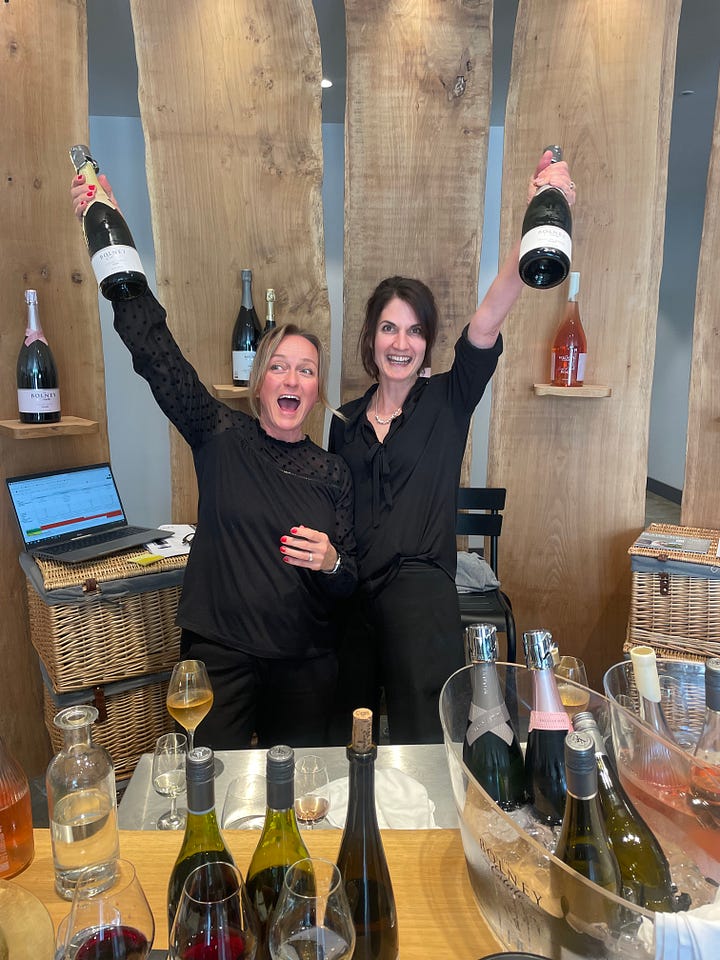
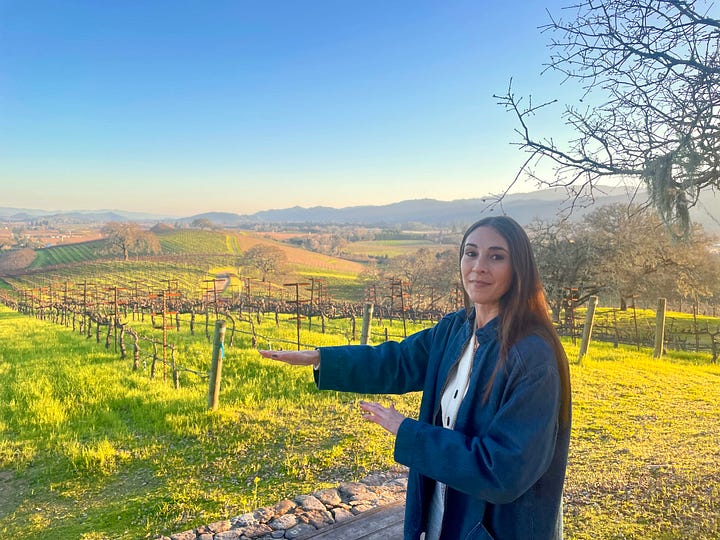
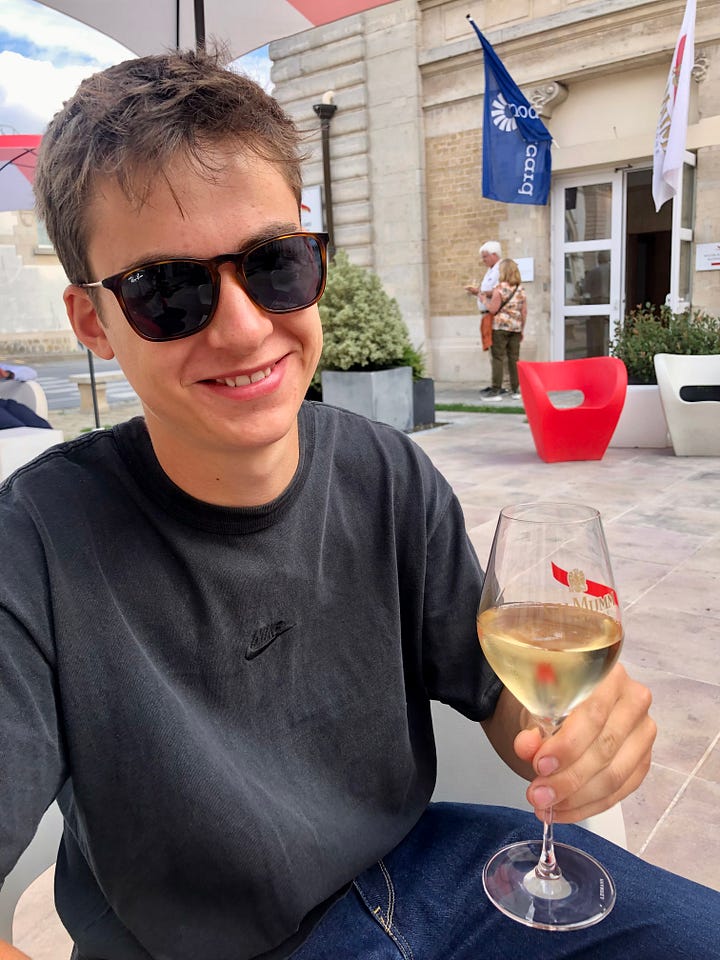
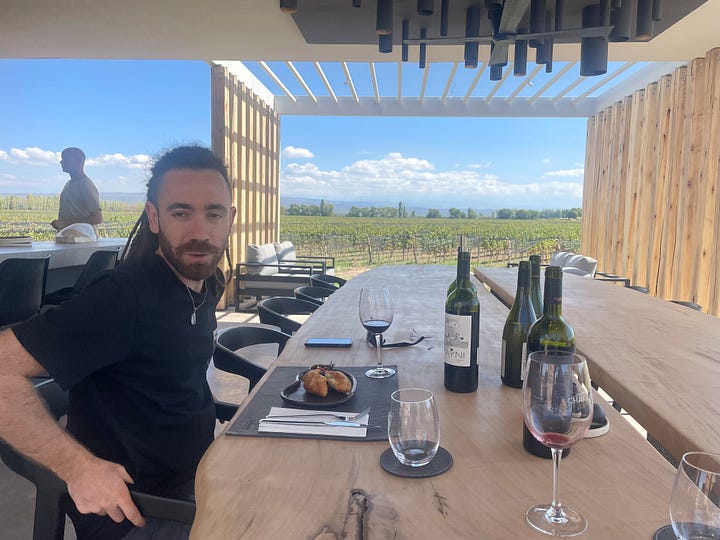
The sun is struggling to come out on an overcast April day at Bolney Wine Estate in Sussex but events manager Kelly Markwick is upbeat. We’re standing among rows of vines on the gentle slope facing Bolney’s new visitor centre. She’s explaining plans to replant this plot with Champagne-specific clones of Chardonnay, Pinot Noir and Pinot Meunier: “how do we make this vineyard as pretty as we can?” asks one of her colleagues.
It's a question for many English producers who have embraced tourism as part of their businesses. Bolney, England fifth-biggest wine producer, was bought by international sparkling-wine giant Henkell Freixenet in 2022. This has given it access to serious investment – and a significant part of that has been in the £1 million visitor centre with restaurant, tasting room and shop. Bolney welcomes around 30,000 visitors a year.
On this quiet Thursday it seems to be mostly locals eating there, though as Markwick says, “locals are your bread and butter.” But she’s keen to talk about visitors from further afield, too. Bolney is just 20 minutes’ drive from Gatwick airport: “global visitors are important too in terms of exports, for getting people engaged with the brand.”
It seems a long way from the equivalent scene a couple of months ago when I was staying at Boschendal, in Stellenbosch, South Africa. At this historic winery, amid colonial buildings and huge trees, families picnic in the shade, ravishing views of Simonsberg mountain in the distance. At Spier, just outside Stellenbosch town, you can sprawl in the sun with your bottle of wine on an immaculate lawn, or eat in a choice of restaurants, or stay in the luxury hotel on site.
It might be more exotic than Sussex but the business logic for such wineries is similar. In Chile, where I lunched in stylish winery restaurants like those at Montes and Santa Rita, well-heeled Brazilians are the largest group of wine tourists. Meanwhile at Quintessa, in California’s Napa valley, staff host tastings in small pavilions dotted around the estate, looking out over stunning landscapes.
The model is at its most developed in California. But while wine tourism started in earnest in Napa in the mid-1970s, California can really thank the movie Sideways (2004) for making wine tasting cool. The film’s road trip of wine geek and Pinot Noir obsessive Miles and his friend Jack through the Santa Barbara wine country helped establish visiting wineries as a fun thing for non-wine trade people to do. Its impact is well attested by many Californian producers.
As Bolney suggests, wine tourism is a key part of the burgeoning English wine industry too. For smaller producers, cellar-door sales can amount to a large proportion of their turnover, enabling them to sell direct to consumers without discounting to middlemen or stores.
Rathfinny, just outside Alfriston, Sussex, is a more ambitious operation. Owner Mark Driver made his fortune in the City, spending at least £10 million to establish the 600-acre (242-hectare) wine estate with an ambition of making more than one million bottles of sparkling wine a year (they’re currently at around the 300,000 mark.) Tourism is an integral part of the business, with a restaurant, accommodation and a flourishing wedding-venue operation.
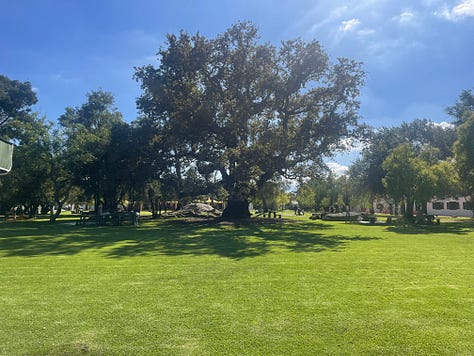
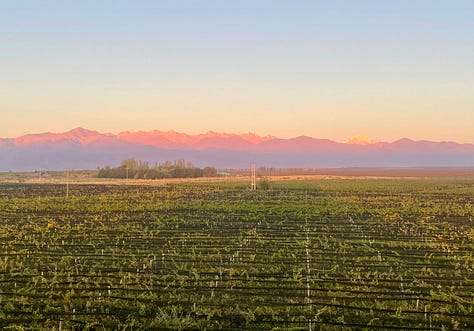
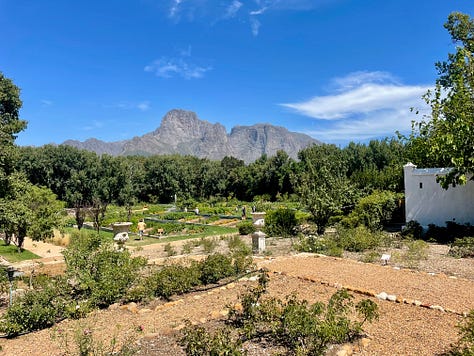
English producers have taken their cue not just from California but from New Zealand and parts of Australia too. Leeuwin Estate, in Australia’s Margaret River, hosts a concert series as well as offering high-end dining options. At d’Arenberg, in McLaren Vale, there’s not only a fancy restaurant but also a museum, the futuristic Cube tasting room, and the opportunity to blend and name your own wine at the Blending Bench. Beaune it is not.
For the New World and English model of wine tourism is largely absent from the wine-producing heart of Europe. With the notable exceptions of Champagne and the capital of the Rioja region, Haro, where many leading producers offer winery tours with restaurants attached, organised (and paid) wine tourism doesn’t extend much beyond the marking of various “wine routes”.
But while there you see a fair sprinkling of dégustation signs in places like the Loire and the Rhône, they are mostly just that – tastings of a producer’s wines. They can be interesting, genuine and friendly: I think for example of a tourist visit I did a couple of years ago in Bergerac at the excellent Domaine du Haut Pécharmant. But these places certainly don’t have restaurants, and at many, you get the impression that the vignerons wouldn’t quite have the patience to take visitors on an experience, as Markwick wants to at Bolney.
Gavin Quinney, British owner of Château Bauduc, cautions that the approach in Bordeaux is typically mixed: “some embrace it, lots do a half-baked job, and some avoid it like plague.” Partly, he says, this is because at the top end, Bordeaux wines are all sold through négociants (merchant middle men) and courtiers (brokers) and the producers are not trying to make sales to visitors. Some actively avoid cellar-door sales: the attitude, he says, is “we don’t get our hands dirty with that kind of thing – it’s not really the done thing.” He points to some high-end chateaux who do take tourism more seriously, such as Château Pichon Baron – though like many, their tours are available only by prior appointment. He himself does tours, though says they’re not that important a part of his business.
Maybe Bordeaux is missing a trick. One European region starting to offer a more complete visitor experience is Portugal’s port country. In Vila Nova da Gaia, traditional base of most of the port producers across the mouth of the Douro from Porto, there’s now a labyrinthine WOW Wine Experience, featuring visits, museums, wine dinners and cultural events such as fado shows. Big producers there including Taylors’s and Symington’s, owners of Grahams, offer restaurants and well-appointed tasting rooms as well as tours.
But Rob Symington, co-CEO of his family firm, sees a more central role for tourism than that in the grape-growing heartlands of the upper Douro. This spectacular highland area is being hit by a combination of problems familiar across Europe and beyond: ageing growers tending small plots and labour shortages as young people leave for the cities and the coast. “We do believe there’s a future for the region, where there’s a mix between tourism, higher living standards, better jobs,” says Symington. “We intend to be part of that journey.” This is part of the “social sustainability” component of firms like Symington’s sustainability strategy.
It isn’t simple, however. High-end tourism demands a skilled labour force, with hospitality training and language skills. In agricultural areas like the Douro, that workforce barely exists. So the challenge is to create career paths in the new industry, for instance by investing in staff training – as well as by offering staff accommodation. Yet at Symington’s main Douro valley site of Quinta do Bonfim, in Pinhão, with two restaurants and a hotel, one eaterie was initially unable to open for two years because of staff shortages, despite offering competitive salaries.
Ultimately, my perspective as a working journalist is no doubt different to those simply on holiday in Margaret River, Bordeaux or Mendoza. I want to be able to talk to winemakers, see the vines and ask questions about mildew pressure rather than just visit fancy barrel rooms and see nice views. When I taste the wines, I like to be able to whip through them with a technical sheet in front of me. I appreciate that this isn’t most people’s idea of a holiday outing.
Nevertheless, my first ever wine-tasting trip in 1992, to Sonoma, was my light-bulb moment with wine. There, for the first time – at Dry Creek Vineyard – I tasted a vertical (different vintages of the same wine) and caught a glimpse of this liquid’s many, subtle nuances. And picnicking with American friends at Simi Winery that day, sitting with a glass of wine in the gardens, I thought: this is basically just paradise.
It's the best kind of wine education – not didactic, but immersive and fun. And for that reason – as well as for the economic health of operations such as Bolney – I’m glad to see wine tourism flourishing in northern climes like Sussex as well as in Stellenbosch.
A fairly random list of some fun European wine visits
Rue des Vignerons – not a producer but a very useful online booking site, covering a variety of producers both grand and modest in Champagne, the Rhône, Bordeaux and beyond. There’s also the similar Champagne Booking site for producers in that region.
Muga – a favourite Rioja producer of mine, Muga offer tours and tastings as well as vineyard tours by electric bike and Segway – or even hot-air balloon.
Ricasoli – this leading Chianti producer is better geared up for tourism than most, with a range of tours and experiences at the spectacular castle of Brolio, as well as a decent restaurant.
Gigondas – the small and very pretty southern Rhône village of Gigondas doesn’t offer organised tourism as such. But it is better geared to visitors than most French appellations, with a communal Caveau du Gigondas letting you taste more than 100 local wines (and buy them at cellar-door prices).
Taittinger – there probably isn’t much to choose between the big Champagne houses when it comes to tours: they’re all grand and all charge quite a lot. But Taittinger do explain the whole production process very well and their cellars are spectacular: a slick tourist experience.
Tio Pepe - Gonzalez Byass offer probably the best of the sherry houses’ tours, with tasting: a good explanation of the sherry-making process in a historic setting in the heart of old Jerez, Andalucia.
What I’ve been drinking this week
I turned 60 last week and celebrated in the manner you’d expect, with a lot of lovely wine and food. And now I get a Senior Railcard and free prescriptions! This really isn’t so bad.
The Society’s Champagne Brut NV - we drank this at my 60th birthday party at the weekend. Made by the excellent smaller Epernay house of Alfred Gratien, this has been my go-to champagne for some years now: elegant with depth and class. Great value, especially when on offer, as at present (The Wine Society, £33.81, though it’s currently on a six-for-the-price-of-five offer, making it just over £28 a bottle when you buy a case of six.)
Teleda “Orgo” Rkatsiteli 2022, Georgia - a traditional Georgian orange wine, made from 50 year-old vines and matured in earthenware qvevri. Complex, characteristically odd - definite marmalade notes - but interesting and different. I drank this with a friend in the ever-excellent Vinoteca Farringdon (available retail from The Bottle Shop, Huntingdon, Wright Wine Co, Cambridge Wine Merchants and elsewhere, from £20.47.)
Bodega Cerron “Los Yosares” 2022, Jumilla - for years, the Monastrell-based reds of Jumilla, in Spain’s hot South East, were baked, over-extracted, overpowered monsters. Now, not so much: I’ve been impressed by the complexity of a string of them, most recently this one that Tim Atkin MW kindly brought to my party at the weekend. Pure, sweet, dark fruit with gamey, savoury notes, complex and long. Serious stuff (the Great Wine Co has the 2021, £52.50; the 2021 and 2022 are available in bond at Christopher Keiller and elsewhere.)
Transparency declaration: I visited Bolney, Boschendal, Spier, Montes, Santa Rita, Quintessa and Rathfinny as a guest of the estates.




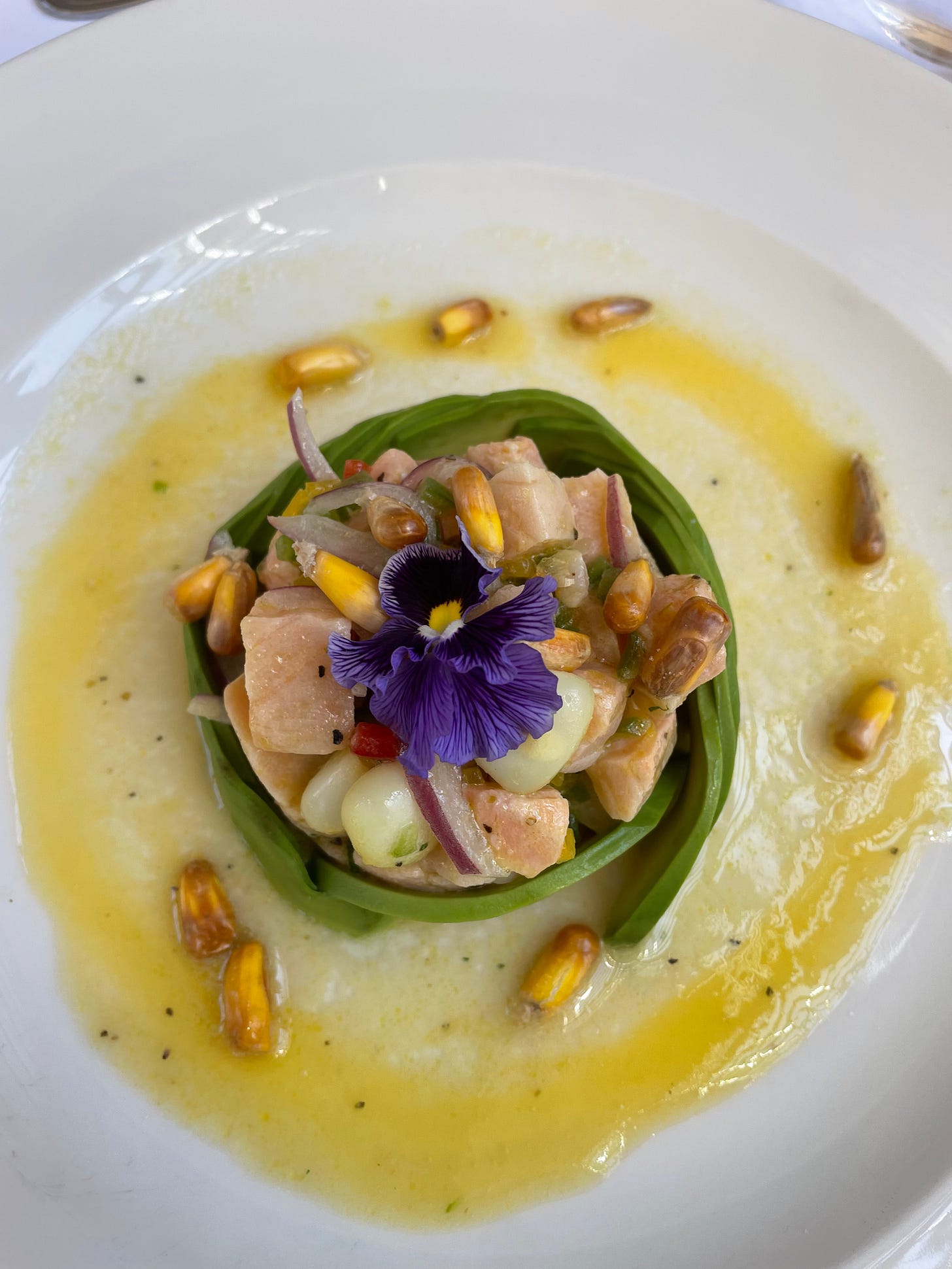
Belated birthday wishes. I would mention that what Sideways did was open people's eyes to the Santa Barbara region. Napa, Sonoma and all that have had a strong enotourism flow for some time before the film. I was working for what is now Inglenook back in 1998 (lord that's a long time ago...) and the visitor presence was so massive and shitshow-y back then than in 2003 they'd already shifted to an only by appointment model.
Loved my visit to Kent and Sussex last year. It was Camel Valley in Cornwall that caught our fancy.